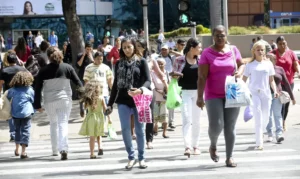In South America, Brazil’s Chamber of Deputies stands out for having the highest gender gap and ranks second for its members’ age.
Women make up just 17.5% of this body, far behind Bolivia, Ecuador, and Argentina, where women hold 46%, 43%, and 42% of parliamentary seats, respectively.
These countries excel in gender balance due to laws ensuring equal participation in elections.
Efforts to include more women in politics show that when at least a third of a group is female, positive changes in health and education indicators follow.
In Brazil, though, female representation in the Chamber has never exceeded 20%.
Countries with more women in power also see less corruption, suggesting that diversity leads to better governance.

Despite slow progress, the share of female deputies in Brazil has grown from 5.7% in 1998 to 17.7% in 2022.
Laws to increase women’s representation focus on campaign funding but not on seat quotas.
Gender and Age Dynamics in Brazilian Politics
A notable law requires 30% to 70% of candidates to be of each gender, but parties often ignore this, expecting leniency from the law.
Critics argue that internal party barriers, not a lack of interest, keep women from running for office.
Brazil’s deputies also tend to be older, with an average age of 51, second only to Argentina. Since 1998, the age range has been between 49 and 51.
This preference for seasoned politicians limits young people’s representation, with only 4% of deputies under 30.
The focus on experienced candidates over youth reflects parties’ strategy to rely on proven politicians rather than invest in new talent.
This situation highlights the challenges and slow progress in diversifying Brazil’s political landscape.
Efforts to include more women and younger individuals are crucial for reflecting a broader society’s needs and perspectives.

